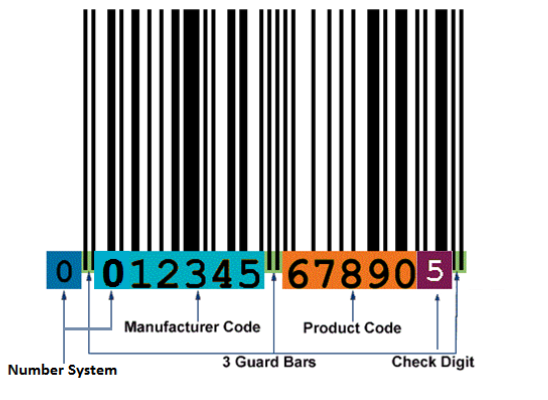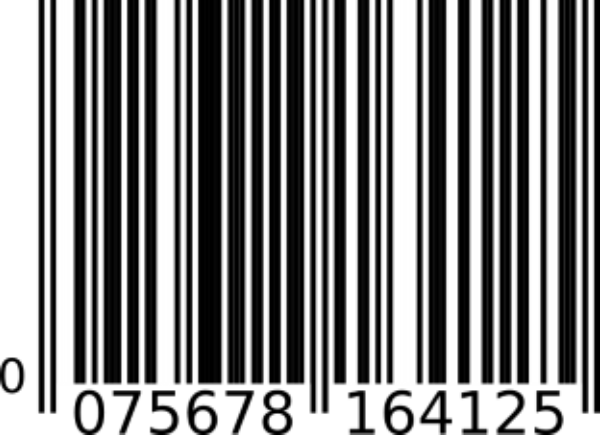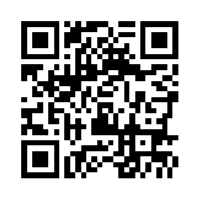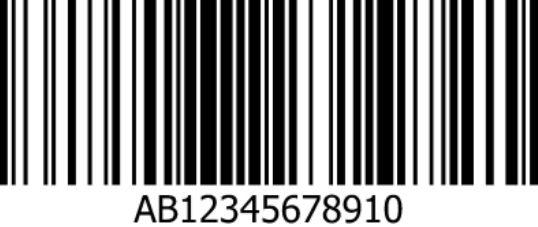What is a barcode?
Introduction
A barcode is an optical machine readable visual pattern which contains a range of important information relevant to a specific product such as price, manufacturing origin and expiry data.
Barcodes come in many shapes and sizes; the most widely recognised type of barcode is composed of parallel lines which vary in width and is commonly referred to as linear or one dimensional (1D). More recently, these codes have evolved into rectangles, dots, hexagons and other geometric patterns in two dimensions (2D).
Barcoding has become ubiquitous within the packaging industry as it provides a fast, accurate, cost-effective and flexible way to trace a wide range of consumer goods from the production line right through to the final point of sale.
Breakdown and benefits
Anatomy of an EAN barcode

How to calculate a check digit
EAN check digits are created by summing each of the odd position numbers multiplied by 3 and then by adding the total amount of the even position numbers. Numbers are examined going from right to left, so the first off position is in the last digit in the code.
Symbology and standards
Symbologies provide an effective way to encode data so that a laser or camera-based scanning system is able to read and understand information within a barcode correctly. Barcodes serve many purposes, therefore the data which they contain and the way in which they must be read vary from product to product. Numerous symbology standards with specific character and patter properties have been formulated in order to meet the individual requirements of each industry. For example, some symbologies work well to contain data in a small area, while others are better being read from a distance.
Industry benefits
Barcodes have enabled the packaging process to become fully automated. Codes can now be verified in real-time on high speed production lines, reducing the risk of mislabelling and the potential number of costly product recalls associated with it.
Although not typically required, this fully automated approach can also be safeguarded with the inclusion of human readable data. If a barcode will not scan, downtime can be prevented as the human readable data beneath the code can be manually input and easily found within a database.
History of the barcode
- 1932: The barcode is born, students from Harvard create coded cards that can be processed by a mechanical system to reveal product specific information.
- 1952: Bernard Silver overhears a supermarket executive expressing his desire for fully automated easy to use in-store product identification systems, drops out of university to pursue the idea with Joseph Woodland.
- 1972: The first commercial digital scanning device is piloted in America at a Kroger® grocery store.
- 1973: George Laurer of IBM creates the twelve digit machine readable Universal Product Code (UPC), which can be used by merchants to identify products. A check digit is added to reduce human error and protect the integrity of the code.
- 1988: Intermec Corporation develops the ‘Code 49’ 2D barcode that can be scanned both horizontally and vertically with automatic error correction.
- 1995: SAFEWAY introduced the first self-scanning store in the UK.
- 2014: The Digimarc barcode is introduced to the US market. Product information and promotional material is invisibly printed on the entire surface of the product, significantly reducing scanning times at the checkout.
Barcode types and usage
Barcode types for primary packaging
EAN-8: This standard implemented by the European Article Number Association (EAN), now commonly known as the International Article Numbering Association (IANA) uses shorter eight digit codes ideal for smaller packages.
The two-part EAN-8 code contains a seven digit message followed by a trailing check digit which is included in order to reduce the risk of human error. Due to short code lengths, the EAN-8 cannot store as much information as other standards.

EAN-13: This symbology standard contains 13 digits, is easy to encode and can hold more product information than an EAN-8. A typical EAN-13 code contains a two digit country numbering authority identifier, a four digit manufacturing code, a five digit product code a trailing check digit.
This type of code is suitable for use in supermarkets but similar to the EAN-8, is limited due to a short code length.

Data Matrix: This high density two-dimensional (2D) Quick Response (QR) code comprises black and white cells arranged in either a square or rectangular pattern.
This type of code is capable of encoding 1556 bytes of text and numeric data, is very reliable, can be read in low contrasts, scanned both vertically and horizontally and with automatic error detection remains readable even if partially damaged or covered.

Barcode types for secondary packaging
ITF-14: This barcode carries static data and includes an indicator number, Global Standards One (GS1) company prefix, item reference and a check digit.
This type of code can be scanned easily at a distance and is typically used for long shelf life products. Considerations must be made at the design stage to ensure that bearer bars, which protect the integrity of the code, do not cross into the empty space around the code and compromise legibility.

CODE-128: This commonly used variable length symbology supports all 128 ASCII characters, requires minimal human input and can be read in either direction.
There are three subtypes to this high density code, 128A, which uses ASCII characters 00 to 95, 128B, which uses ASCII characters 32 to 127 and 128C, which uses ASCII characters 00 – 99.
This symbology can also be coded to comply with popular GS1 industry standards and includes application identifier numbers, which ensure that the data within the code can be read in the correct order. CODE-128 is typically used in warehousing and logistics.

Commons terminology associated with barcoding
Check Digit
This is the final digit of a barcode number that is used in order to validate the integrity of the code and ensures that it has been composed accurately. This digit of authentication, which is linked exclusively to the code, is particularly useful as it reduces the possibility of human error associated with manual data entry.
Picket fence code
A barcode printed horizontally that resembles the slats in a picket fence. This commonly used pattern prints reliably at an acceptable resolution with a Thermal Transfer Overprinter (TTO). Thermal inkjet (TIJ) printers are unable to print in this orientation.
Ladder code
A vertically printed barcode that accepts a greater number of pixel errors. This style can easily be printed with a thermal inkjet, yet is more challenging to print by thermal transfer as it is more physically demanding on the print head than picket fence codes.
This style can be challenging to print with thermal transfer printers and more physically demanding on the printhead than the commonly used picket fence code.
ANSI
The American National Standards Institute (ANSI) is a non-profit committee that voluntarily defines and monitors industry standards. In the manufacturing industry, ANSI verifiers are used in order to assess and grade the quality of barcoding. Such standards ensure worldwide conformity, safety and quality of products.
Scanner
Used to read a barcode to check legibility but not to grade the standard at which it has been printed.
Verifier
Designed to examine the code and identify defects in order to ensure that printed codes meet a desired specification.
Barcode verifiers are widely used in the packaging industry in order to alphanumerically grade the quality of printed barcodes.
Barcodes printed for large supermarkets typically require an A or B ANSI grading; failure to consistently meet these requirements can lead to large fines and possible loss of contracts. The only way to effectively ensure codes meet the highest level of ANSI grading is through random sampling.
Related Articles
Get in touch
Looking to automate barcode printing in your operation? Please get in touch and one of our experts will be happy to help.

